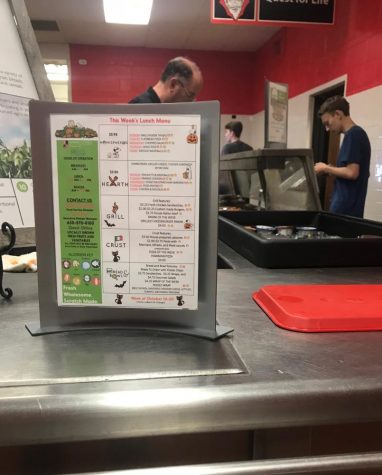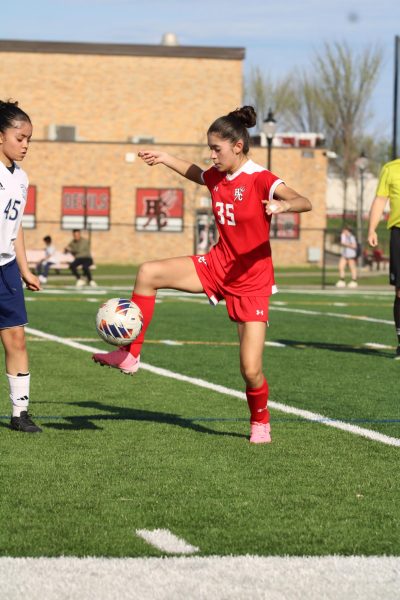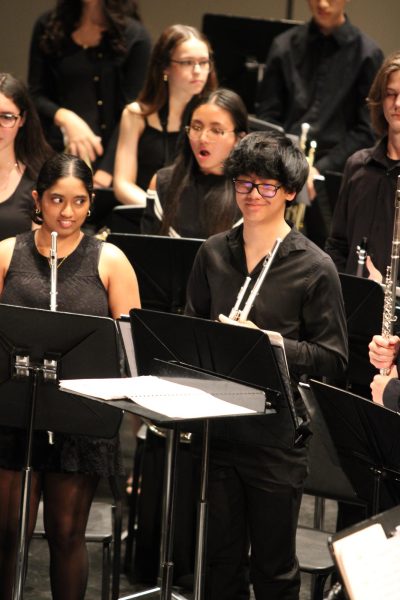Should we have an open campus?
Many lunch periods are jam-packed with students, but an open campus could help solve that problem.
At the beginning of October, the administration changed the lunch drop-off policy. Not only are there stricter guidelines for parents dropping off forgotten lunches, but deliveries from outside businesses like Domino’s Pizza, UberEats, and more are now banned. Although the reasoning behind this decision is understandable, some students are disappointed because now there is no way to get food from outside restaurants if they don’t like the cafeteria food.
Many high schools, including our rivals, Lyons Township, have an open campus, meaning students are free to leave the school during their lunch period to get food from outside establishments.
We should employ an open campus at Central. It will offer more food options to students, as well as give them a well-deserved break from their difficult schedules.
While we do have a very extensive menu in the school cafeteria offered through Quest, the food service provider, it still can’t cater to every student that goes here. Many people at school have dietary restrictions or allergies, and they need to be aware of the ingredients within everything they consume. The items in the cafeteria are labeled with symbols to indicate certain allergens, but there are no ingredient lists.
“Allergies are more complex than a cute little symbol signifying an allergen,” said Tori Merchantz, senior, who is allergic to peanuts, tree nuts and soy. “I can’t eat from the cafeteria because I have no sure way of knowing if my food is safe or not. They don’t provide ingredient lists, and those are what really matter.”

The Quest menus change from day to day; however, some items are always available.
In addition to allergy risks, some foods offered at our school are unhealthy, like chicken nuggets, pizza, fries, cookies and Bosco Sticks. Having the option to leave would allow students to make healthier choices. However, the cafeteria does feature some more healthy options, such as homemade soups, sandwiches, and salads. Sandwiches and salads can even be preordered to save time, encouraging more students to order healthier options.
“I thought kids [from my school] made a lot more unhealthy choices,” said Kristin Kasprzak, Quest director, who had an open campus in high school. “[Quest has] many healthy options in our six stations.”
With the busy schedules we have during the school day, the ability to use our lunchtime to take a break off school grounds would be very refreshing and beneficial, especially to those in AP and honors classes. Any way that the administration can help students under stress should be tested to make days feel less overwhelming.
“[An open campus] would be good, but the lunch period would have to be longer for anyone to be able to [go anywhere],” said Shreya Sharma, junior.
An open campus would also alleviate some of the overcrowding that students notice at lunch, especially during periods that don’t split another class, because teachers often switch their students into those periods during tests and important lessons. With many of the juniors and seniors leaving the school for lunch, much of the cafeteria crowding would be significantly minimized.
According to the Chicago Tribune, there was a group of students from Dundee-Crown High School in Carpentersville, Ill. that lobbied their school board to get their open campus back. The students suggested an incentive program, where students with a good GPA, minimal tardies, and no referrals could leave the campus. It’s a clever idea because it minimizes the number of students leaving at one time and gives a motive to students to keep their grades up and go to class.
Changing to an open campus lunch would have many positive effects for many students. It shows to be effective in many other schools, and with the correct implementation it would work well here.

Lauren Wols is a junior who probably has a friend crush on you. If she’s not writing for Devils’ Advocate, she may be choreographing or doing other...













